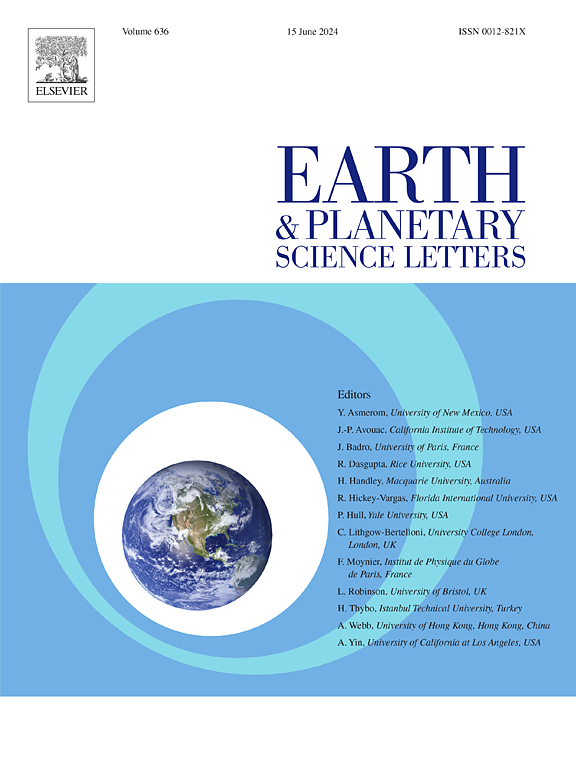石榴石在太古宙多变质地体中的可靠计时
IF 4.8
1区 地球科学
Q1 GEOCHEMISTRY & GEOPHYSICS
引用次数: 0
摘要
可靠地重建太古代多变质地体的压力-温度-时间(P-T-t)历史是深入了解早期地球构造过程的关键。在这方面,石榴石可以说是最重要的矿物。它不仅捕获了关于变质作用的时间和条件的信息,而且还可以通过多个构造旋回保存这些记录。本文采用原位Lu-Hf测年方法,对印度南部达尔瓦克拉通西部两条绿岩带石榴石进行了构造变质演化研究。石榴石年龄揭示了太古宙两次不同的中高压构造变质事件的记录。Holenarsipur绿岩带的石榴石发育于2.53 Ga的新太古代晚期变质期,而Kalyadi绿岩带的石榴石发育于2.96 Ga的区域变质期。结合原位独居石U-Pb定年和热力学模拟结果,我们的数据表明,两个相邻的绿岩带在整个中太古宙和新太古宙经历了截然不同的P-T-t演化,挑战了WDC构造演化的现有模式。通过石榴石的原位Lu-Hf测年获得多变质地体的可靠年龄约束,可以直接与P-T信息联系起来,这是破译整个地球历史上地壳变质的神秘记录的关键进展。本文章由计算机程序翻译,如有差异,请以英文原文为准。

Garnet as a reliable timekeeper in Archean polymetamorphic terranes
Reliably reconstructing the pressure–temperature–time (P–T–t) history of Archean polymetamorphic terranes is key to gaining insight into the tectonic processes operating on the early Earth. In this regard, garnet is arguably the most important mineral. Not only does it capture information about both the timing and the conditions of metamorphism, but can also preserve this record through multiple tectonic cycles. Here, we used in situ Lu–Hf dating of garnet from two greenstone belts in the Western Dharwar Craton (WDC) in southern India to investigate their tectono-metamorphic evolution. Garnet ages reveal a record of two distinct medium- to high-pressure tectono-metamorphic events during the Archean eon. Whereas garnet from the Holenarsipur Greenstone Belt grew during late Neoarchean metamorphism at 2.53 Ga, garnet from the Kalyadi Greenstone Belt records a 2.96 Ga regional metamorphic episode that has not previously been recognized. Coupled with results from in situ monazite U–Pb dating and thermodynamic modelling, our data suggest that the two neighboring greenstone belts, which were previously thought to share a common tectonothermal history, underwent contrasting P–T–t evolutions throughout the Mesoarchean and Neoarchean, challenging existing models for the tectonic evolution of the WDC. Obtaining reliable age constraints in polymetamorphic terranes via in situ Lu–Hf dating of garnet that can be directly linked to P–T information represents a key advance in deciphering the cryptic record of crustal metamorphism throughout Earth history.
求助全文
通过发布文献求助,成功后即可免费获取论文全文。
去求助
来源期刊

Earth and Planetary Science Letters
地学-地球化学与地球物理
CiteScore
10.30
自引率
5.70%
发文量
475
审稿时长
2.8 months
期刊介绍:
Earth and Planetary Science Letters (EPSL) is a leading journal for researchers across the entire Earth and planetary sciences community. It publishes concise, exciting, high-impact articles ("Letters") of broad interest. Its focus is on physical and chemical processes, the evolution and general properties of the Earth and planets - from their deep interiors to their atmospheres. EPSL also includes a Frontiers section, featuring invited high-profile synthesis articles by leading experts on timely topics to bring cutting-edge research to the wider community.
 求助内容:
求助内容: 应助结果提醒方式:
应助结果提醒方式:


